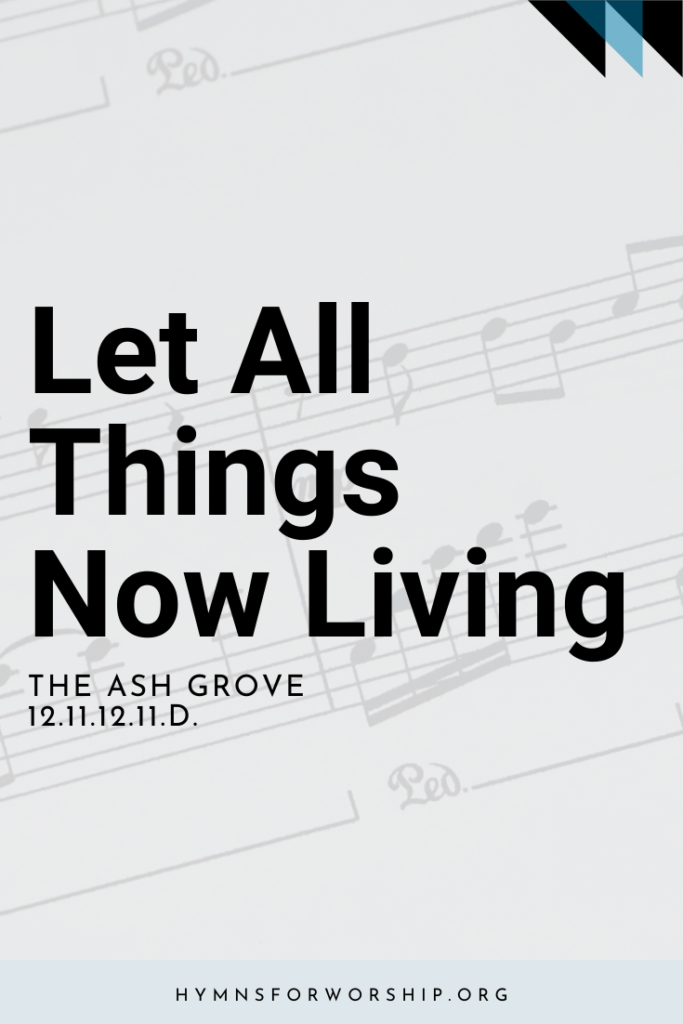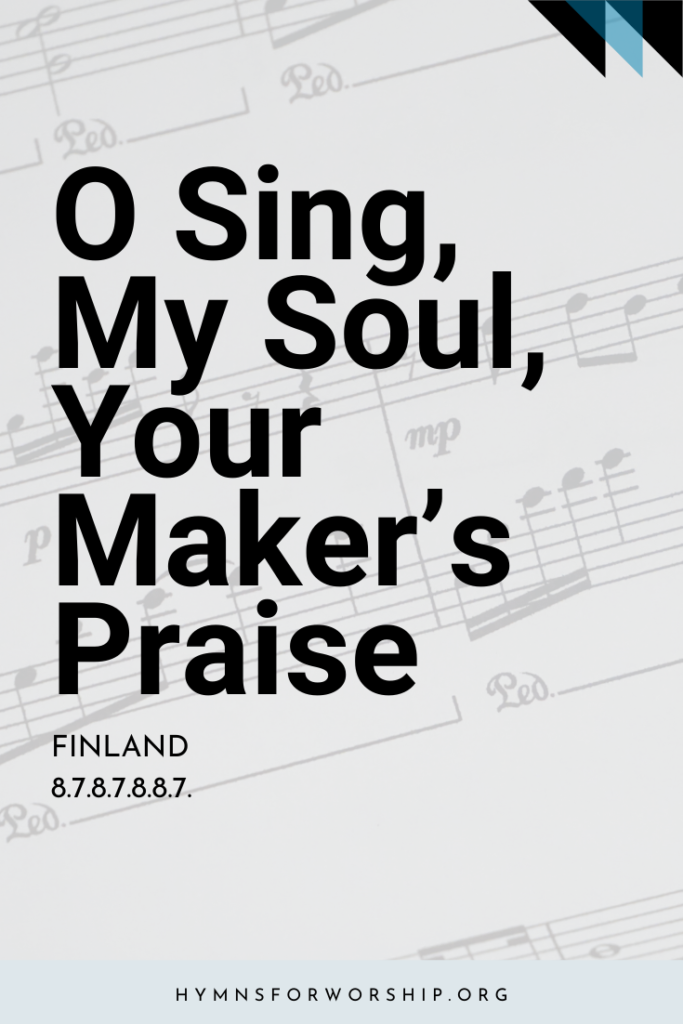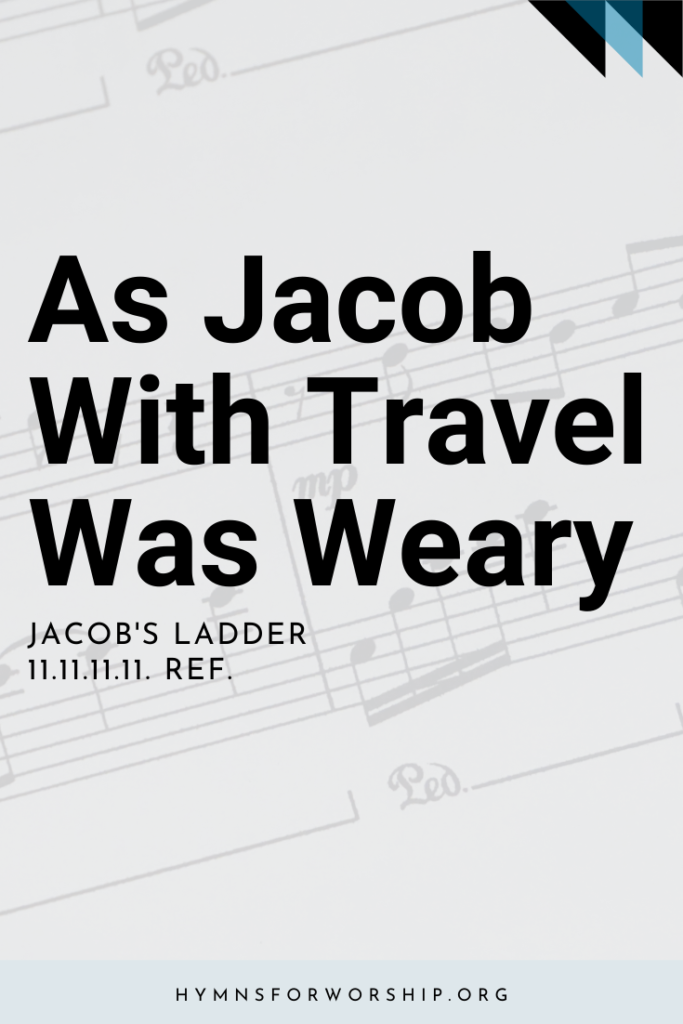TRINITY
SDAH 72
Creator of the stars of night,
Thy people’s everlasting light,
O Christ, Thou Saviour of us all,
We pray Thee, hear us when we call.


Text
1
Creator of the stars of night,
Thy people’s everlasting light,
O Christ, Thou Saviour of us all,
We pray Thee, hear us when we call.
2
At the great name of Jesus, now
All knees must bend, all hearts must bow;
And things celestial Thee shall own,
And things terrestrial, Lord alone.
3
To God the Father, God the Son,
And God the Spirit, Three in One,
Laud, honour, might, and glory be
From age to age eternally.
Amen.

Hymn Info
Biblical Reference
(a) Gen 1:16; John 1:9 (b) Phil 2:9, 10 (c) 1 Tim 1:17
Author
Adapted from John M. Neale (1818-1866)
Text Source
Anon. Latin
Year Published
9th century
Hymn Tune
CONDITOR ALME
Metrical Number
L.M.
Arranger
C. Winfred Douglas (1867-1944)
Tune Source
Sarum Plainsong
Theme
TRINITY

Get the hymn sheet in other keys here
Notes
Get to know the hymns a little deeper with the SDA Hymnal Companion. Use our song leader’s notes to engage your congregation in singing with understanding. Even better, involve kids in learning this hymn with our homeschooling materials.
The Latin original of this six-stanza poem was first found in a ninth-century manuscript in Bern, Switzerland. It was marked “Advent, Evening,” and sung during the season of Advent, but by omitting stanzas 2, ,3, and 5, the hymn can be placed in the section on the Trinity. Te final stanza is a doxology differing from the original, which was:
To Him who comes the world to free,
To God the Son, all glory be;
To God the Father, as is meet,
The God the blessed Paraclete.
This is the first time that praise to the “Father, Son, and Holy Ghost” appears in a hymn as the final stanza. The translation from Latin is by John M. Neale (1818-1866; see Biographies) and has been altered from his original in Collected Poems, 1914, by editors down through the years. The SDAH version is from the Episcopal Hymnal 1940, including the music.
The melody of CONDITOR ALME (Gracious Creator) is from the treasury of plainsongs, or chants, and may be very similar to the music sung by Jesu and the disciples at the close of the first Lord’s Supper (Mark 14:26). The text they sang was from the Passover Hallel, or Psalm 115 to 118 (More about this may be found on page 672 of the Desire of Ages by Ellen G. White.)
The tune they used is not known, but a number of traditional tunes have been passed down orally from generation to generation by the Sephardic Jews. Helen Grauman, in Music in My Bible, 1956, quotes an example on page 135 of an ancient melody sung in Psalm 117 by some of the older Eastern Sephardic Jews. The plainsong remains to this day as the only church music that has not been tainted to some degree by secular influences.
At Rome, prior to the sixth century, the weekly singing of the entire psalter was the basic principle of the offices, or daily services of prayer and reading, including morning and evening prayer, and at five offices during the day. The 150 psalms were sung every week, and the entire Bible read every year. To those in monastic life, “prayer was the highest exercise in which man can engage, the most efficacious of all actions, the chief human agency in the salvation of the world.” And there were 5o of these offices every week! (Edward Dickinson, Music in the History of the Western Church, 1953).
In England the Sarum rite (plainsong) arose in a group of learned clergy led by Osmund, Bishop of Salisbury Cathedral, in 1085. It contained 119 of the best chants and hymns to that date, including hymns for the festival days of Advent, Nativity, Epiphany, Lent, Easter, Ascension, Pentecost, and Trinity. This collection achieved great popularity in England, rivaling the services in the use at all the other great cathedrals. J.M. Neale took the Latin poem from this collection and translated it into English. It was first published in Hymnal Noted, 1851.
CONDITOR ALME is the tune that has always been associated with this text. Our hymnals today have modernized there plainsongs, giving them the bar lines we are used to. But the plainsong had no beat; it simply used the rhythms and accents of expressive speaking. The early ones were very simple, almost a monotone, with one syllable of the text to a note. But creativity will have its way, and little by little the melodies took on the beauty of interval skips and slurs on one syllable, with the expression that followed the architecture of that melody line.
A harmonized chant is SDAH 665, “All Things Come of Thee,” which the SDAH Committee Brough back from F.E. Belden’s Chrsit in Song, 1908.
The arranger of CONDITOR ALME, Charles Winfred Douglas, was born February 15, 1867, at Oswego, New York. While attending Syracuse University, he was organist at St. Paul’s Cathedral, and after graduation was organist-choirmaster at Church of Zion and St. Timothy’s Church, New York City. Then came theological study at St. Andrew’s Divinity School, Syracuse, and a position as curate of the Church of the Redeemer, New York, City. A severe lung illness forced him to move west; he settled near Denver at Evergreen, Colorado, serving in several Episcopal churches. During two periods he studied church music and plain chant in Europe, particularly with the Benedictines on the Isle of Wight.
He is recognized as an outstanding authority in this field. A member of many learned societies, he was awarded the D.Mus. degree from Nashota, Seminary, Wisconsin, in 1917. An expert in Indian affairs and education, he was named “Tall Pine Tree” by a Hopi pueblo. In 1936 he was Hale lecturer at Seabury-Western Seminary, Evanston, Illinois, the lectures being published as Church Music in History and Practice, 1937. A scholar, researcher, linguist, poet, composer, and editor, he was the preeminent Episcopal musician of his time. Douglas edited Hymnal 1940, finishing the final proofs the day before his death on January 18, 1944. His extensive library of liturgy and church music is now at Washington Cathedral, Washington, D.C.
He spent his energetic, productive life in helping people learn how to praise God in a more beautiful and meaningful way. Concluding his Hale lectures, he said, “Still the Holy Spirit moves in the heart of men to create new songs consonant with the old. We can thank God that He has led us so far toward a pure worship where the prayer will sing and the music will; where each member of the mystical body of Christ will be taken up into the heavenly worship and actively participate in it with heart and mind and voice.”
SDAH 136, IN BULCE JUBILO, and SDAH 576, MORNING SONG, are also arranged by Douglas.






